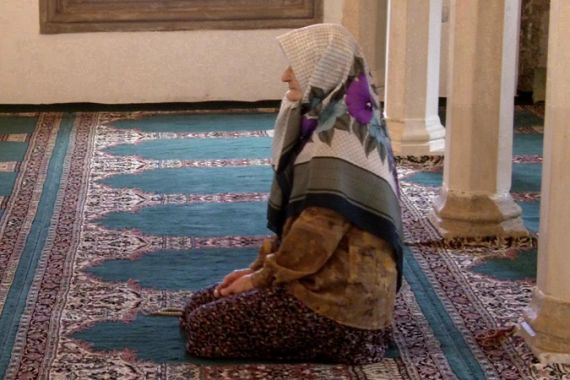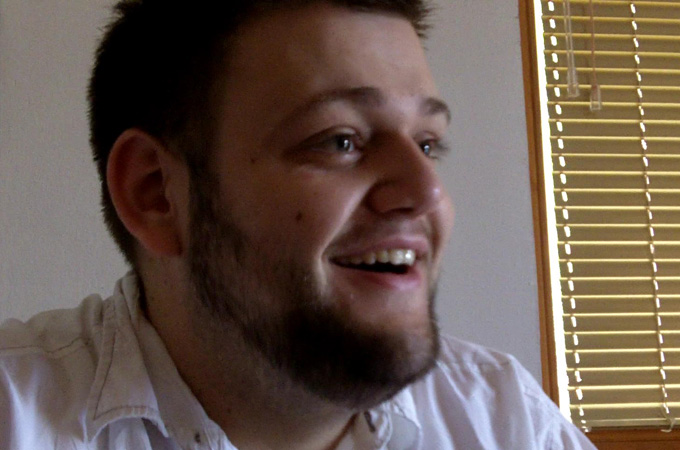A beacon of hope in Bosnia
It was the scene of some of the worst atrocities of the 1992-95 war, but residents are slowly rebuilding ties.

 |
| There is just one functioning restaurant in Foca [Credit: Phil Cain] |
Foca, a region of breathtaking gorges and dark forests in south-eastern Bosnia will be forever remembered for some of the most appalling atrocities of the 1992-1995 war. The declaration of independence by a Muslim-dominated administration in Sarajevo on March 3, 1992 prompted a defiant Bosnian Serb population to try and carve out territory of their own – territory which would become the post-war Bosnian “entity” of Republika Srpska, in which Foca lies.
Bosnian Serb forces descended on Foca just a month after the war began, terrorising, imprisoning and torturing the Muslim population and destroying their property and cultural heritage. Hundreds were murdered with dozens of corpses dumped in the Drina River.
But the systematic rape of Muslim women and girls is what made the name Foca infamous. Victims were moved into what would become known as “rape camps”, one of the biggest being a sports hall next to the municipal police station. Bosnian Serb soldiers and paramilitaries would visit to pick out women and girls as young as 12 and take them away to rape them. Some told of being forced to feign laughter, others of domestic enslavement.
No Muslims left
Foca’s name was linked to 11 indictments at the war crimes tribunal at The Hague, equalling the grim record set by Srebrenica, where Bosnian Serb forces killed 7,000 men and boys and displaced 20,000 or more in the final months of the war three years later.
Two men implicated in the crimes committed in Foca died before they could face trial, but eight have been convicted and handed sentences totalling 133 years. The trial of Bosnian Serb leader Radovan Karadzic, the last of those to be tried at The Hague for crimes relating to Foca, is still underway.
Before Foca’s horrors began the population of 45,000 had been half Serb and half Muslim. By the time they were over there were no Muslims left. Over 430 bodies have been unearthed in the years since, but 2,800 more people remain unaccounted for.
Most of the Muslim inhabitants simply fled. Not one of the town’s 17 Muslim holy places, 12 mosques, was left standing. Among those destroyed was the 16th century Aladza (“Colourful”) Mosque.
In 1994 the Bosnian Serb authorities celebrated the success of the campaign by renaming the region “Srbinje”, or “the place of the Serbs”. And so it was for years afterwards, often being considered a likely bolt-hole for indicted war criminals, like Karadzic, and Ratko Mladic, who is still at large.
‘Unnatural coalition’
This has now changed, largely thanks to Zdravko Krsmanovic, the mayor since 2004. Among his first acts was to acknowledge a court judgement to restore the name “Foca”. He then set his mind to enabling Muslim refugees to return, rebuilding mosques and ridding the town of war criminals and their attendant hoodlums.
Among the around 4,000 Muslim returnees is Lutvija Sukalo, a 57-year-old who worked as an engineer at the Miljevina mine when it was surrounded by Serb paramilitaries on April 8, 1992. Sukalo, his wife and his daughter managed to escape, but his son-in-law has not been heard of since.
Krsmanovic has run the city council through what Sukalo, his ally as chairman of the town council, calls an “unnatural coalition” made up of: Krsmanovic’s moderate New Socialist Party; the returning Muslims; the SDS, the party Karadzic used to run; and the Radicals, whose paramilitary division, the “White Eagles”, played a role in the ethnic cleansing of Foca.
Among some circles in the Muslim-Croat Federation, Bosnia’s other entity, and the international community these achievements have made Krsmanovic a beacon for what could be achieved to reverse political and social deadlock. Joe Biden, the US vice-president, singled him out for praise in May last year.
‘Brotherhood and unity’
 |
| Faruk Dzankic is the 22-year-old imam of Foca’s only remaining mosque [Credit: Phil Cain] |
All is not entirely rosy, however. “There are still people who walk freely in the streets of Foca who committed these crimes,” says Sukalo. Radovan Stankovic, sentenced to 20 years for raping and enslaving Muslim women in Foca, was sprung from a local prison three years ago on a trip to the dentist.
Sukalo says Muslim returnees prefer to live in outlying villages where there are fewer of their one-time persecutors.
Grinding poverty still interferes with efforts to return the community to some kind of normality. At night the streets of the region’s main town, also called Foca, are gloomy and forbidding. The main recreational activity is loitering in the street, while men stand and drink in barely furnished rooms that function as bars. The tablecloths are worn through and the chairs are on the brink of collapse.
There is only one functioning restaurant and one hotel, the Zelengora, which has been without a lick of paint for at least 30 years. The menu, if one were provided, would simply say “fried eggs”.
“At least Foca is not divided and there are no incidents,” says Krsmanovic. “I have prevented trouble thanks to my strength and my charisma.” His vision is one of “brotherhood and unity”, a slogan coined by Tito, the Communist dictator of Yugoslavia who ruled over Bosnia until his death in 1980.
Sukalo – who moved back in 2000, initially living in a tent village before moving into a flat in town – agrees that things were much worse before Krsmanovic decided to run for office.
“The past is not a taboo,” he says. But no-one outside political circles wants to discuss the mayor’s record. The prevailing view of the past is summed up by Nikola Perisic, the head of the SDS in Foca, a picture of Karadzic on the local party headquarters’ wall: “The collapse of Yugoslavia resulted in military operations and then sometimes to crime.” For his part, Krsmanovic says he was always against the war. “That was true for many people, they simply did not say so in public.”
Normalisation
In Donje Polje, on the edge of town, an old woman in a headscarf sits patiently in front of a small mosque. She is the only one of the returnees who comes to pray every day.
“A couple of dozen people come for Friday prayers, mostly older people,” says Faruk Dzankic, the mosque’s 22-year-old imam. Born in Tuzla in the north and educated at a German elementary school, Dzankic was just four when Foca was “ethnically cleansed”. His child is the only Muslim baby in town.
“Sometimes I feel uncomfortable when I am walking through town,” he says. “But also many people make an extra effort to be friendly to me.”
In January the windows of the mosque were smashed. “The people who did it probably knew I wasn’t there,” Dzankic says. “My car wasn’t parked outside.”
Some degree of normalisation is evidently possible, but not even Sukalo believes Foca will ever return to how it was. With only a fifth of the pre-war Muslim population, he says “the return of refugees is complete”. Sukalo’s own daughter lives in Sarajevo.
Nevertheless, even relatively modest achievements serve an important purpose. Sukalo says: “Segregation between the Muslim-Croat and Serb entities would lead to a new war in the long run.”